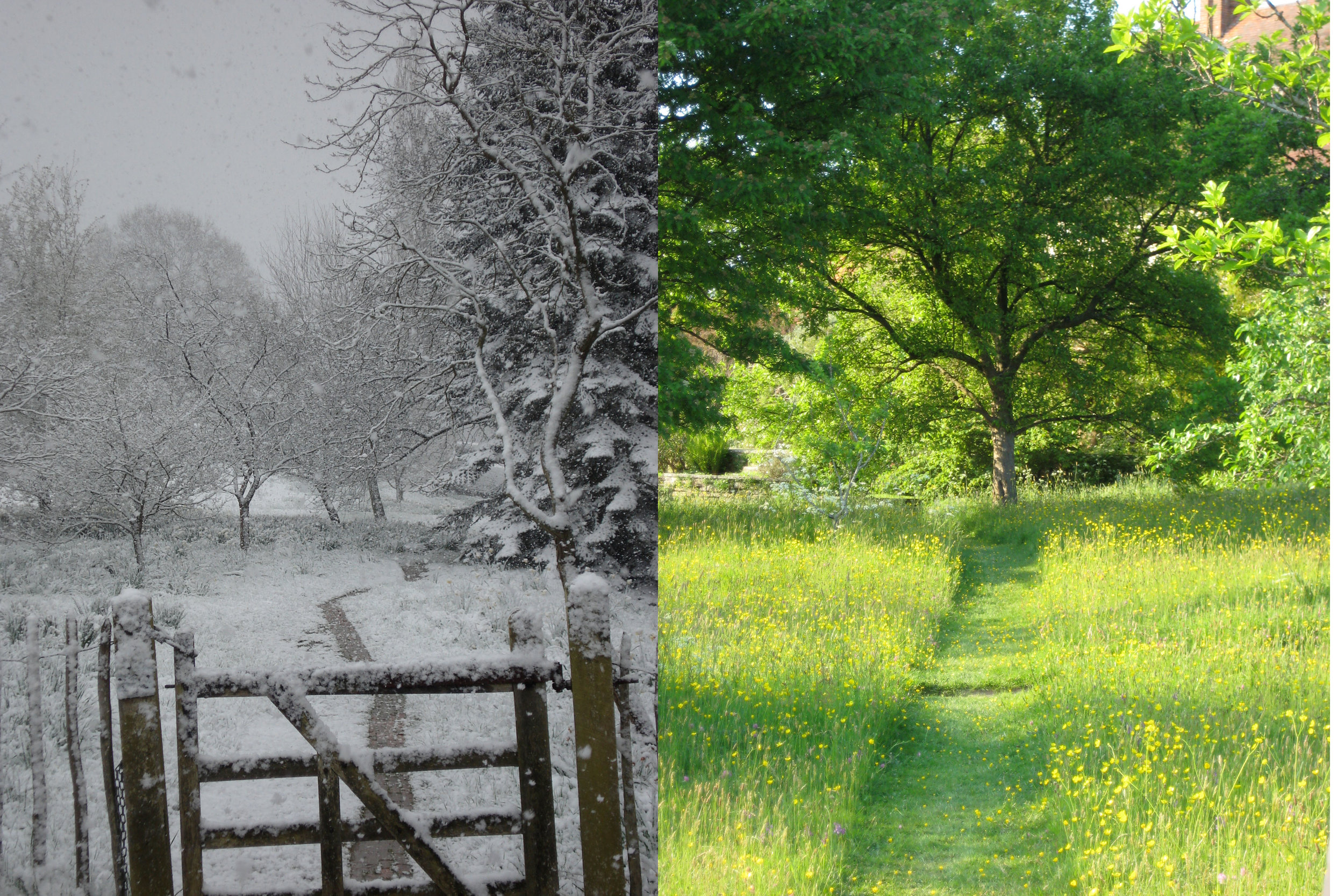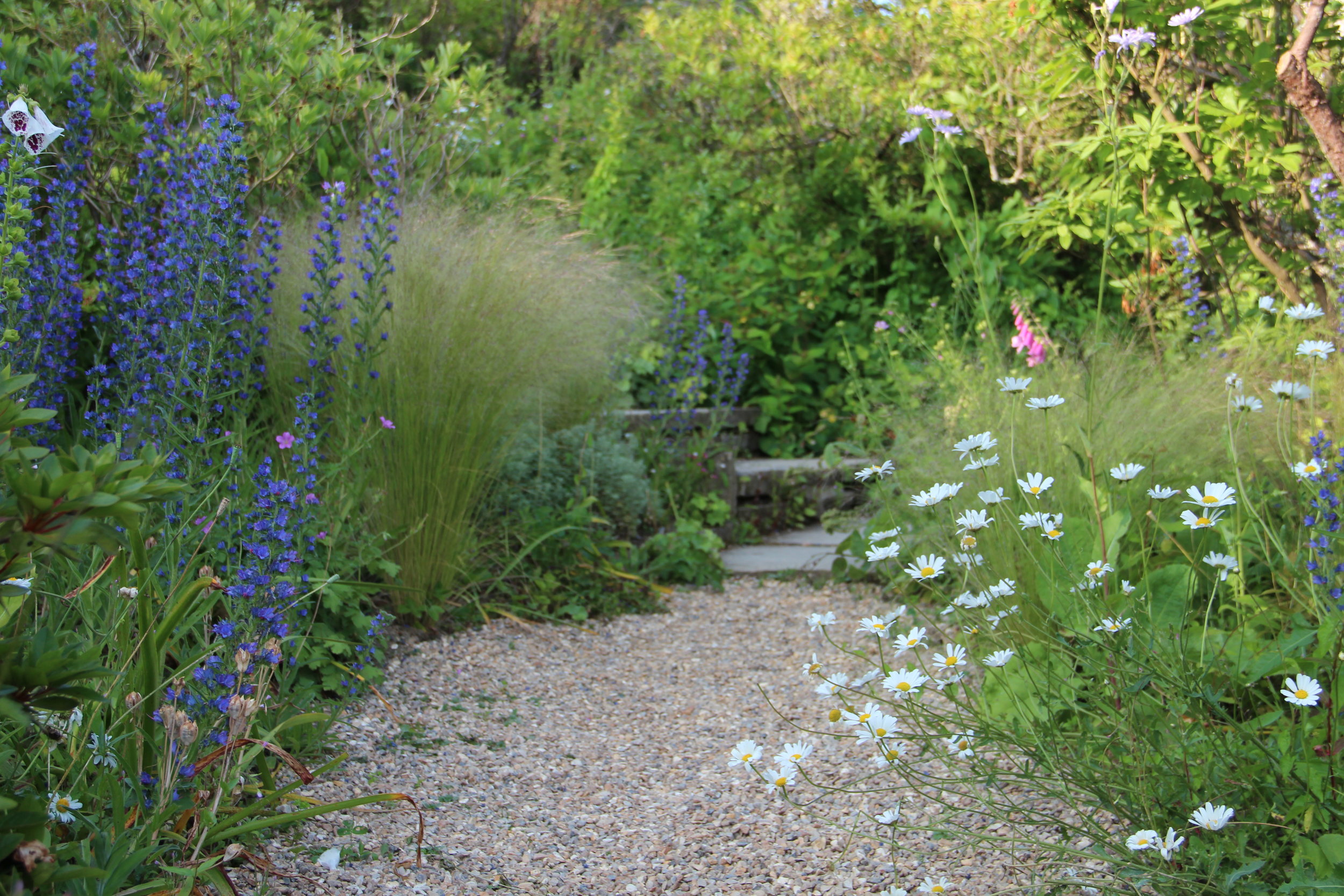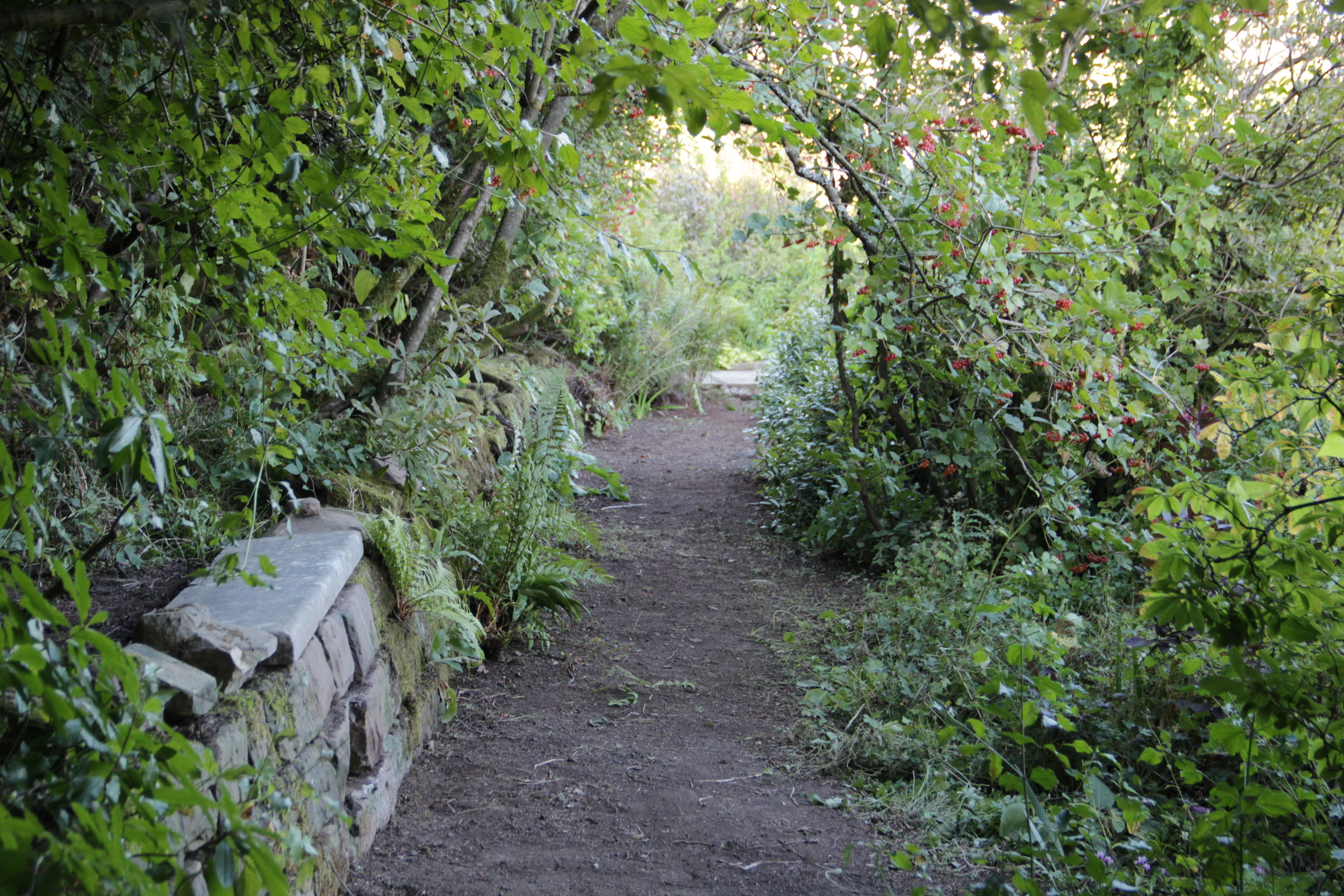the right direction
Trivial details glossed over by some can be the plague of others; a friend once told me this is the disease of an aesthete. Sometimes though, the best lessons we learn are often stumbled into by making a mistake, or in better cases, a happy accident.
During the two years I studied at Longwood Gardens, each student was required to keep a garden; an area designed and created of our own ideas. It was an exciting time, a blank canvas of a 15’x50’ garden plot to call my own but suddenly there were too many directions and ideas to choose from. The design process seemed overwhelming and my mind felt like a glass of water, but without the structure of the glass to hold it all together, ideas spilling in every direction and with no shape or structure. Given instructions by our teachers that in order to keep the design process cheap, since we would only have our gardens for two years, they told us to ‘beg, borrow, and steal’ to get the materials needed for our plots. We were granted access to an area of free but limited hardscape materials that were left behind by the preceding graduating class, which myself and the other students ravaged and put to good use.
After nabbing some large bluestone pavers, but not enough, I had trouble deciding what to use to complete the rest of my paths. Trying to keep free of spending money on materials that would just need to come out in two years, I was forced to get creative and resourceful. The best ideas sometimes emerge from the smallest of budgets, or lack thereof and this lack of budget taught me a valuable lesson, resulting in employing other senses in ways I had not anticipated in the garden.
Remembering a grove of Pinus sylvestris not far from my plot, I collected and spread the fallen needles throughout my garden paths as mulch between the bluestone pavers. Pleasing to the eye in color and texture, and free, it was different from what I expected and as time wore on, I enjoyed the calm feelings I got while walking through my garden.
I learned from my choice of material that what is under foot can have an effect on how it shapes our garden experience. The feeling of calm as I walked over the pine needles on my paths, as if walking through a quiet pine wood, connected me in a more intimate way to my garden, more so than if I had chosen stone or even left the paths as bare earth. This detail helped me approach future designs and layout of gardens in a new way.
I took for granted that the senses we use in the garden are related to sight, scent and sound but what we cannot touch with our hands, we can still feel beneath the soles of our feet. Flowers are a sight to behold, and texture and form for that matter, but are these the only reliable tricks we can employ on the visitors experience? Plant based gardens are nice but seem one-dimensional and need to be more complex to stimulate me; I love plants, but not obsessed with them as the only ingredient in the garden recipe. Experiencing gardens has always had an emotional impact on me. I don’t always want to think when I am in a garden but I want to feel , and what lies underneath my feet helps me do just that. A wise teacher once told me, ‘when visiting a garden, don’t just think about what is that you like about it, but think about what you would do better.’
Budgets aside, one of the dominating factors in choosing path materials is largely based on the visual pleasure it provides but chosen materials do have the right places in which to use them, task accordingly and site appropriate of course. Treat the garden in layers and these small details in garden design can help hijack our senses and lead us to have a different garden experience, not always obvious and often subtle. Not everyone understands gardening to a degree as much as we would like, and some say its the slowest form of theater, but it’s up to us to set the stage and make it a more cerebral experience, attacking the senses on the sly and leaving the emotions tantalized by the interactions people can have in the garden.
This lesson I realized is not just in relation to paths but I have since applied to all areas of design, as someone obsessed with aesthetics, the details we employ in our gardens and spaces can’t just be visually attractive but must serve a dual purpose if possible, digging deeper to find it. I find pleasure in thinking of gardens and spaces in this way; the layout of a place, the arrangement of the space within it; it is always an exercise for the mind. Thinking I was crazy to obsess about such things, I found solace, after Longwood, in a recommended book written by Sylvia Crowe, she wrote the book on garden design, still standing the test of time. Once realizing other people knew this language too I was thankful that such valuable lesson crossed my path early, due to my student garden, a lack of budget, and some pine needles. See, the beauty is in the details, there are never problems, only solutions and always a silver lining if you know how to read it. -James














